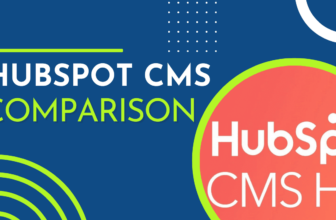
What is Affiliate Marketing?
Definition and Overview
Affiliate marketing is a performance-based marketing strategy where a company pays a third-party affiliate for marketing its products or services. Consider affiliate marketing as your go-to marketing strategy, benefiting both your business and partners. This performance-based marketing style rewards affiliates for each visitor or customer they bring in via their marketing efforts. How does it work? A company creates an affiliate marketing program, recruiting affiliates to promote its products or services using their marketing channels. These programs facilitate partnerships between affiliates and merchants, allowing affiliates to tap into networks that connect them with relevant merchants. When a visitor clicks the affiliate’s unique link and makes a purchase, the affiliate earns a commission. Commission rates vary, with some programs offering a flat rate, percentage of the sale, or recurring commissions for repeat purchases. Affiliate marketing is cost-effective for companies and a lucrative income source for affiliates promoting relevant products they believe in. Successful programs include Amazon Associates, ShareASale, and CJ Affiliate. To get started, find a company or product, apply to their affiliate marketing program, and use the provided unique link when promoting.
Ever dreamt of earning money by promoting your favorite products from reputed companies like Adidas, Amazon, and Apple? Well, it’s not just a dream, but a reality and a booming billion-dollar industry. These brands, along with many others, have affiliate programs that let individuals like you earn a commission for each sale made via your referral link. Affiliate marketing is a performance-based marketing strategy where you promote a product or service and earn a commission for every sale made through your unique link. It’s a win-win situation – merchants gain more exposure and sales, while you earn a passive income. For instance, Adidas offers an 11% commission, Amazon Associates (Amazon’s affiliate program) offers a variable rate from 1% to 10%, and Apple’s Affiliate Program offers a 7% commission for every sale.
Affiliate Marketing For Beginners
The Merchant, Affiliate Marketer, Consumer, and Affiliate Network

When it comes to the world of affiliate marketing, it’s essential to understand the role of each player involved.
The Merchant
The merchant, also known as the vendor, creator, or seller, is the party responsible for creating the product. This could be a physical good, such as a book or gadget, or a digital product, like an e-course or software. As a merchant, you pour your time, energy, and resources into developing a product that meets the needs and desires of your target audience. You invest in research, design, production, and quality control to ensure that your product stands out in the marketplace. Your reputation and success as a merchant hinge on the quality and value of the products you offer.
The Affiliate
When it comes to the world of affiliate marketing, the affiliate marketer plays a pivotal role. Essentially, an affiliate is an individual or a business that promotes a product or a service and earns a commission for each sale made through their unique referral link. The affiliate earns a passive income by promoting products that align with their audience’s interests and needs. The more traffic the affiliate drives to the merchant’s site, the higher the chances of making a sale, and in turn, earning a commission.
The Consumer
The consumer plays a vital role in the affiliate marketing process. In fact, they are the ones who ultimately make the purchase, making them an essential part of the entire process. As a consumer, you are constantly bombarded with various marketing messages and advertisements. However, when it comes to affiliate marketing, the process is a bit different. Affiliate marketers promote products or services on their own websites or platforms, and when you make a purchase through one of these links, the affiliate marketer earns a commission. The beauty of affiliate marketing is that it benefits both the affiliate marketer and the consumer. As a consumer, you get access to a wide range of products and services that you may not have discovered otherwise. Plus, you can often find exclusive deals and discounts through affiliate marketing channels.
The Network
The affiliate network serves as a crucial bridge between merchants and affiliate marketers. This platform is essentially a digital marketplace where businesses, known as merchants, can connect with marketers, who are interested in promoting their products or services. The affiliate network offers a streamlined process for both parties, making it easier for merchants to find and recruit suitable affiliates while providing marketers with a vast array of options to choose from when selecting products or services to promote. The network acts as a hub for tracking sales, managing payments, and handling other administrative tasks, allowing merchants and affiliates to focus more on their core responsibilities.
How does affiliate marketing work?
Affiliate marketing is a marketing model that allows companies to pay for third-party products to be sold. The earning potential of affiliate marketing is significant, and tracking affiliate sales is crucial for success. If I hear a podcast and saw a social media influencer advertising something, I’m a good affiliate. In exchange for referring a product to their customers as a partner, they could earn a commission on all sales which leads into referrals for the business. When you select an e-commerce affiliate program, you will be given the option of requesting a tracking email. You can also make commissions if customers purchase your product via your website and you receive sales from them.
Benefits of Becoming an Affiliate Marketer
Affiliate marketing is a popular and effective way to earn money online. Here are some of the key benefits of becoming an affiliate marketer:
- Low start-up costs: One of the biggest advantages of affiliate marketing is that it requires very little upfront investment. You don’t need to create your own products or maintain an inventory, which means you can start promoting products and earning commissions right away.
- Flexibility: As an affiliate marketer, you have the freedom to promote products that are relevant to your audience and align with your interests. You can work from anywhere, at any time, and choose your own schedule.
- Passive income: Once you’ve set up your affiliate marketing campaigns, they can continue to generate income for you even when you’re not actively working on them. This makes affiliate marketing a great way to earn passive income online.
- Performance-based rewards: With affiliate marketing, you only earn commissions when you make a sale. This means that you’re incentivized to promote products that are high-quality and likely to convert. It also means that you have the potential to earn a significant income if you’re able to drive a lot of sales.
- High earning potential: The earning potential in affiliate marketing is substantial, with some successful marketers raking in up to $170,000 per month. However, it’s essential to understand that these figures represent the top tier of affiliate marketers, and reaching this level requires dedication, hard work, and a well-thought-out strategy.
Overall, affiliate marketing can be a lucrative and rewarding career path for those who are willing to put in the work to build their audience and promote high-quality products. By leveraging the power of affiliate marketing, you can turn your passion into a profitable business. Additionally, successful affiliate marketing strategies can lead to substantial affiliate income, making it an appealing option for many.

Choosing a Profitable Niche
Research and Validate Your Niche
To research and validate a profitable niche in affiliate marketing you should follow these steps:
- Identify your interests and expertise: Start by making a list of topics you are passionate about and knowledgeable in. This will make it easier for you to create content and promote products in that niche.
- Assess market demand: Use keyword research tools such as Google Trends, Keyword Planner, and SEMRush to determine the popularity and competitiveness of your chosen niche. Look for niches with a high search volume and low competition.
- Analyze competition: Check out what your competitors are doing in the niche. Look for gaps in the market that you can fill with unique content and products.
- Evaluate profitability: Look for affiliate programs related to your niche and analyze their commission rates, cookie durations, and product prices. Use this information to estimate your potential earnings.
- Test your idea: Before fully committing to a niche, create a small amount of content and promote affiliate products to see if you can generate sales. This will help you validate your niche and make any necessary adjustments
What is the most profitable affiliate marketing niche?
The most profitable affiliate marketing niche can vary depending on the audience, products, and market trends. However, some of the consistently profitable niches include:
- Health and Wellness: This niche is always in demand as people are always looking for ways to improve their health and well-being. Products such as supplements, fitness equipment, and weight loss programs can be very profitable.
- Wealth and Money: This niche includes personal finance, investing, and making money online. People are always looking for ways to improve their financial situation, making this a profitable niche.
- Technology and Gadgets: With the constant release of new technology and gadgets, this niche is always in demand. Affiliates can promote products such as smartphones, laptops, and smart home devices.
- Education and Online Courses: With the rise of remote learning, online courses and education have become increasingly popular. Affiliates can promote courses in various fields such as business, marketing, and technology.
It’s important to note that while these niches can be profitable, it’s crucial to choose a niche that aligns with your interests and expertise. This will make it easier for you to create content and promote products, leading to higher conversion rates and profits.
Joining Affiliate Networks

Find and Join Relevant Affiliate Programs
With so many affiliate programs out there, how do you find and join the ones that are relevant to your niche and audience? First, it’s important to understand that not all affiliate programs are created equal. Some may offer higher commissions, while others may have a wider range of products to promote. Additionally, some programs may be a better fit for your audience than others. For example, if your website is focused on fitness and wellness, you’ll want to look for affiliate programs in that niche, rather than promoting unrelated products. To find relevant affiliate programs, start by making a list of companies that sell products or services that would be of interest to your audience.
Once you have a list, head to their websites and look for a link or page that says “Affiliates” or “Partners.” This is usually where you’ll find information on how to join their affiliate program. Another way to find affiliate programs is to use an affiliate network. These networks act as a middleman between merchants and affiliates, and they can be a great way to discover new programs and manage your relationships with multiple merchants. Some popular affiliate networks include Commission Junction, ShareASale, and Rakuten.
When evaluating an affiliate program, be sure to look at the commission rate, the cookie duration, and the terms and conditions. The commission rate is the percentage of the sale that you’ll earn, while the cookie duration is the amount of time that a cookie will track a visitor from your site. The terms and conditions will outline important details such as payment threshold, and restrictions on promotional methods.
Once you’ve found a few affiliate programs that you’re interested in, it’s time to apply. Most programs will require you to fill out an application, which will include information about your website and your promotional strategies. Be sure to be honest and transparent in your application, as this will increase your chances of being accepted. In summary, finding and joining relevant affiliate programs is an important step in monetizing your website or blog. By doing your research, using affiliate networks, and being honest in your application, you can find programs that are a good fit for your niche and audience, and start earning commissions on the products and services that you promote.
Understand Commission Structures and CPA Models
Commission structures refer to the way in which affiliate programs pay their affiliates for their efforts. These structures can vary widely from program to program, so it’s important to carefully review the terms of each one before signing up. Some common commission structures include:
Pay-per-sale: In this model, affiliates earn a commission for every sale that they generate through their unique affiliate link. The commission rate can vary depending on the product or service being sold, as well as the specific terms of the affiliate program.
Pay-per-lead: In this model, affiliates earn a commission for every lead that they generate through their affiliate link. A lead is typically defined as a potential customer who has shown interest in the product or service by filling out a form or taking some other specified action.
Pay-per-click: In this model, affiliates earn a commission for every click on their affiliate link, regardless of whether or not a sale is ultimately made. This can be a good option for affiliates who are just starting out and want to focus on building traffic to their site.
Cost-per-action (CPA) models, on the other hand, refer to the amount that an affiliate program is willing to pay for a specific action taken by a user who clicks on the affiliate’s link. This action could be anything from making a purchase to filling out a form or downloading a piece of content. The CPA rate will depend on the value of the action to the advertiser, as well as the competitiveness of the affiliate market for that particular product or service.
By understanding the commission structures and CPA models of the affiliate programs you participate in, you can better tailor your promotional efforts to maximize your earnings. For example, if a program offers a high pay-per-lead rate, you might focus on generating leads through targeted content and calls to action. On the other hand, if a program offers a high pay-per-sale rate, you might focus on promoting high-ticket items to your audience. In addition to understanding the commission structures and CPA models of each affiliate program, it’s also important to consider other factors such as the quality of the products or services being offered, the reputation of the advertiser, and the level of support and resources provided to affiliates. By carefully evaluating these and other factors, you can choose the right affiliate programs to participate in and set yourself up for success as an affiliate marketer.
Types of Affiliate Products: Physical, Information, and Services
There are various types of products and services that you can promote as an affiliate marketer. Here are some examples:
- Physical Products: You can promote physical products such as electronics, fashion items, books, and home appliances. For instance, if you have a blog about technology, you can join an affiliate program for a popular electronics brand and promote their products on your blog. When your readers click on your affiliate link and make a purchase, you earn a commission.
- Digital Products: Digital products such as e-books, online courses, software, and apps are also popular among affiliate marketers. For example, if you have a blog about personal finance, you can promote an online course on investing or budgeting and earn a commission for each sale made through your referral link.
- Services: You can also promote services such as web hosting, graphic design, and virtual assistance. For instance, if you have a website about blogging, you can promote a web hosting company’s services and earn a commission for each sign-up made through your referral link.
Creating Valuable Content
Content Strategies: Reviews, Tutorials, Comparison Posts, and Resource Pages
When it comes to promoting affiliate products, content strategies are key. By creating valuable and informative content, you can attract potential customers and encourage them to make a purchase through your affiliate link. Here are some content strategies you can use to promote affiliate products:
1. Reviews
One effective way to promote affiliate products is by writing reviews. Share your honest opinion about the product, highlighting its features, benefits, and potential drawbacks. This will help your audience make an informed decision and increase the chances of them making a purchase through your affiliate link.
2. Tutorials
Another great way to promote affiliate products is by creating tutorials. Show your audience how to use the product and the results they can expect. This will not only help your audience understand the product better but also build trust and credibility in your recommendations.
3. Comparison Posts
Comparison posts are also a great way to promote affiliate products. Compare different products in the same category, highlighting their features, benefits, and prices. This will help your audience make a more informed decision and increase the chances of them making a purchase through your affiliate link.
4. Resource Pages
Lastly, consider creating resource pages that list and link to various affiliate products. This can be a one-stop-shop for your audience to find all the products they need in one place. Be sure to include a brief description of each product and why you recommend it. By using these content strategies, you can effectively promote affiliate products and increase your earnings. Remember to always disclose your affiliate relationships and provide honest and valuable content to your audience.
Why Choose Affiliate Marketing Over Other Types of Blog Monetization
One of the biggest advantages of affiliate marketing is that it allows you to monetize your blog without having to create your own products. This can be a huge time-saver, as creating and marketing your own products can be a lengthy and expensive process. By promoting other people’s products, you can focus on creating high-quality content for your audience while still earning an income. Another advantage of affiliate marketing is that it’s relatively low-risk. Since you’re not creating or stocking your own products, you don’t have to worry about inventory or shipping costs.
Additionally, many affiliate programs are free to join, so you don’t have to invest any money upfront. This makes it a great option for bloggers who are just starting out and may not have a lot of capital to invest in their blog. Affiliate marketing also allows you to diversify your income streams. Instead of relying on just one source of income, such as advertising or sponsored posts, you can promote multiple products and earn commissions from each one. This can help to provide a more stable and consistent income for your blog.
But perhaps the biggest advantage of affiliate marketing is that it allows you to promote products that you truly believe in. When you’re promoting a product as an affiliate, you’re essentially vouching for it to your audience. This means that you need to be sure that the product is high-quality and will provide value to your audience. By promoting products that you truly believe in, you’ll build trust with your audience and establish yourself as a credible source of information.
Building an Audience and Driving Traffic
Traffic sources for affiliate marketing websites
Traffic is the lifeblood of any affiliate marketing website. Without a steady stream of visitors, even the best-designed site will struggle to generate sales and commissions. Fortunately, there are a variety of traffic sources that affiliate marketers can tap into to drive traffic to their sites. These can be broadly categorized into paid and organic traffic sources. Paid traffic sources include pay-per-click (PPC) advertising, social media advertising, and email marketing. Organic traffic sources, on the other hand, include search engine optimization (SEO), content marketing, and social media marketing. By leveraging a mix of these traffic sources, affiliate marketers can build a sustainable and profitable online business.
Build an Email List and Grow Your Business
An email list is an important tool for promoting affiliate products and growing your business. By building a list of subscribers who are interested in your niche, you can consistently market to a warm audience who are more likely to be receptive to your promotions. To build an email list, create a lead magnet, such as an e-book or webinar, that will entice visitors to provide their email address. Then, use an email marketing service to manage your list and create automated email sequences to nurture your subscribers and promote your affiliate products. Remember to segment your list based on subscribers’ interests and engagement, and regularly clean your list to maintain high deliverability rates. With a strong email list, you can effectively promote affiliate products, increase conversions, and grow your business.
Utilize Traffic Sources: Social Media, Blogging, and Microsites
Diversifying traffic sources is key to reaching a wider audience and boosting revenue. Here are three effective ways to drive traffic to your affiliate site:
- Social Media: With 3.6 billion users worldwide, social media is a powerful tool for connecting with potential customers and promoting your affiliate offers. Create profiles on popular platforms like Facebook, Twitter, and Instagram, and share engaging content with links to your site. Join relevant groups and forums, and participate in discussions while subtly promoting your offers.
- Blogging: Create high-quality, informative blog posts optimized for search engines to attract organic traffic. Focus on providing value to your readers, and promote your affiliate offers naturally. This helps establish trust and can increase sales.
- Microsites: Create targeted microsites for specific products, services, or topics. A focused landing page optimized for conversions can increase click-through rates and sales.
To maximize these traffic sources, track your results and analyze your data using tools like Google Analytics. Understand where your traffic comes from, which sources convert best, and which offers generate the most revenue. Use this information to optimize your strategies, improve conversion rates, and generate more traffic to your affiliate offers.
Setting Up Your Affiliate Marketing Business
Create a Content Plan and Set Goals
To achieve success in your affiliate marketing business, it’s crucial to create a well-thought-out content plan and set clear, measurable goals. A content plan will help you organize your content and ensure that it aligns with your overall marketing strategy. This can include creating blog posts, social media updates, email newsletters, and other types of content that will engage your audience and promote your affiliate products.
Setting goals is also essential for tracking your progress and measuring the success of your affiliate marketing efforts. These goals should be specific, measurable, achievable, relevant, and time-bound (SMART). For example, a SMART goal for your affiliate marketing business might be to increase your website traffic by 20% over the next quarter through targeted content marketing and social media promotion. By creating a content plan and setting SMART goals, you’ll be well on your way to achieving success in your affiliate marketing business.
Diversify and Experiment Frequently
In today’s digital age, it’s crucial to diversify your content and experiment frequently to find what works best for your audience. By offering a variety of content types, such as blog posts, videos, infographics, and podcasts, you can appeal to a wider range of learning styles and preferences. This can help you reach a larger audience and increase engagement. Additionally, experimenting with different formats, topics, and styles can help you identify what resonates most with your audience. By analyzing data and feedback, you can refine your content strategy and create more effective and impactful content. So, don’t be afraid to try new things and take risks – it could lead to greater success and growth for your brand or business.
Monitor Performance and Constantly Improve
As an affiliate marketer, it’s essential to keep track of your performance to ensure that you are maximizing your earnings. This involves regularly monitoring your website’s traffic, conversion rates, and revenue. By analyzing this data, you can identify areas for improvement and make data-driven decisions to optimize your affiliate marketing strategy.
One effective way to monitor your performance is to use analytics tools such as Google Analytics. These tools can provide you with valuable insights into your audience’s behavior, helping you to understand what works and what doesn’t. You can use this information to refine your content, improve your call-to-actions, and experiment with different promotional strategies.
In addition to monitoring your performance, it’s crucial to continuously improve your skills and knowledge as an affiliate marketer. This can involve staying up-to-date with the latest industry trends, attending training courses, and networking with other affiliates. By constantly learning and improving, you can stay ahead of the competition and maximize your earning potential.
Growing Your Affiliate Marketing Business

How to Get Started in Affiliate Marketing and Becoming a Successful Affiliate Marketer
To become a successful affiliate marketer, it’s important to promote high-quality products that you truly believe in and that will provide value to your audience. Building a loyal audience takes time and effort, but it is crucial for your success as an affiliate marketer. You can build a loyal audience by consistently providing valuable content, engaging with your followers, and being transparent about your affiliate relationships. By promoting high-quality products and building a loyal audience, you can establish yourself as a trusted authority in your niche and increase your earning potential as an affiliate marketer.
Remember to always disclose your affiliate relationships to your audience and to choose products that are relevant to your niche and that you have personally vetted. This will help you build trust with your audience and increase the likelihood that they will make a purchase through your affiliate link.
Affiliate Marketing Tips to Increase Earnings
Affiliate marketing can be a lucrative online business, but it takes effort and strategy to increase earnings. Here are some tips to help you boost your affiliate marketing revenue:
- Choose the right products: Promote products that are relevant to your audience and offer a good commission rate. Research the product and the merchant before promoting them to ensure they are reputable and offer good value to your audience.
- Create high-quality content: Provide valuable and informative content to your audience. This will help build trust and credibility with your audience, making them more likely to click on your affiliate links and make a purchase.
- Promote strategically: Place your affiliate links in strategic locations, such as in product reviews, tutorials, and round-up posts. Use call-to-actions to encourage clicks and make sure your links are easy to find and understand.
- Build an email list: Building an email list allows you to promote your affiliate products to a targeted audience who has already shown interest in what you have to offer. Use email marketing to nurture relationships with your subscribers and promote your affiliate products.
- Track your results: Use analytics tools to track your affiliate marketing performance. This will help you understand what’s working and what’s not, so you can make data-driven decisions to optimize your campaigns and increase your earnings.
Avoiding Common Mistakes and Developing a Good Relationship with Affiliate Managers
One of the most significant mistakes is promoting low-quality products. As an affiliate marketer, your reputation is on the line every time you recommend a product to your audience. Therefore, it’s crucial to ensure that the products you promote are of high quality, reliable, and offer value to your audience. Another mistake to avoid is neglecting the relationship with affiliate managers. Building a good relationship with them can provide you with valuable insights, exclusive deals, and better promotional materials. By avoiding these common mistakes and focusing on building strong relationships with affiliate managers, you can maximize your earnings and establish a successful affiliate marketing business.
FAQs
What is the best way for a beginner to start affiliate marketing?
Find a niche you are passionate about. Research and select affiliate products related to that niche. Build a website or blog focusing on the niche. Create high-quality content that provides value to your audience. Promote the affiliate products through your content and various marketing channels. Monitor and optimize your campaigns to maximize conversions and earnings.
Is affiliate marketing hard for beginners?
No, it is not strictly speaking. Anyone can learn how to do it, but not everyone is able to invest the time and focus it takes to make it work.
Does affiliate marketing actually work for beginners?
Yes, affiliate marketing can work for beginners but it takes time to learn and dedication to build a profitable business. You can shorten your learning curve by joining an affiliate marketing training program
How much can a beginner make in affiliate marketing?
Beginners in affiliate marketing can earn anywhere from a few dollars to a few hundred dollars per month, depending on their efforts and the niche they choose. Success in affiliate marketing typically requires consistent effort, quality content, effective promotion strategies, and building a loyal audience.
Can I teach myself affiliate marketing?
Yes, you can teach yourself affiliate marketing but it can take a long time to learn the ins and outs to be successful. You can speed up the process by enrolling on an affiliate marketing training course.
What is the best way of affiliate marketing?
Focus on creating valuable content and building an engaged audience.
How do I become an affiliate marketer with no experience?
Identify a niche, choose an affiliate program, set up a website or blog, create valuable content, drive traffic, and promote affiliate products. Learning from an affiliate marketing expert is one way to become successful more quickly.
Key takeaways on how to get started in affiliate marketing
You can make your start in affiliate marketing by choosing a profitable niche and join relevant affiliate programs. Avoid promoting low-quality products and focus on building strong relationships with affiliate managers to maximize your earnings and establish a successful affiliate marketing business.
Ready to start your affiliate marketing business? Why not join an affiliate marketing training course. Learning from a top affiliate marketer will give you the edge with step-by-step guidance, and insider secrets from 7 figure earning industry experts. Check out our Top 4 Best Affiliate Marketing Training Programs here.
127






